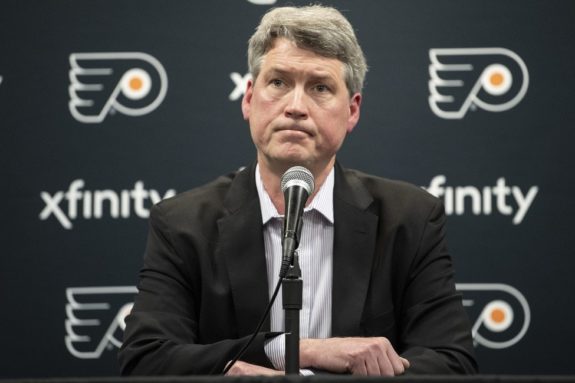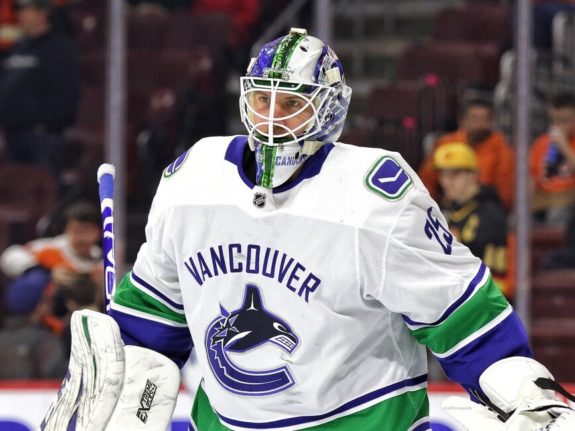The Philadelphia Flyers have been relatively quiet this offseason due to limited cap space. In fact, at the time of publish, the Flyers had just under $5 million left to spend, and four spots on the roster are still vacant. Fortunately, the financial situation is not as dire as it seems because several stars are already locked up. This includes Kevin Hayes, Travis Konecny, and Ivan Provorov, all of whom signed new contracts last year.
Still, there is at least one matter which will require attention and prudent financial planning. That is to sign Carter Hart to a new contract once his entry-level deal expires next summer.

So far, the Flyers have gotten their 2016 second-round draft pick’s services at a bargain rate. Hart signed a three-year, $2.8 million contract in 2016, but since he was just a teenager and did not appear in any NHL games, the Flyers were able to slide his entry-level contract two years. Thus, it did not become effective until the 2018-19 season, his first in the NHL.
That season, Hart mustered a .917 save percentage (SV%) and a 2.83 goals-against average (GAA) while serving as his team’s primary netminder. This past season, he followed up with a .914 SV% and a 2.42 GAA and established himself as one of the league’s best young goaltenders. In both seasons, his cap hit was just over $730K. He’ll have the same cap hit again this season, but after that, the Flyers will have to pay up to retain him. It will be possible, but it won’t be cheap.
Flyers’ Cap Situation Next Summer
As of now, the Flyers have just 13 players under contract for the 2021-22 season. They are also estimated to have over $25 million in cap space next summer. Both numbers will change if the Flyers sign current RFA Phil Myers to a multi-year deal, but regardless, general manager Chuck Fletcher will have room to maneuver.

Of course, there will be some minor holes to fill next summer. This includes the bottom-six forward group if Scott Laughton and Michael Raffl walk in free agency. Nonetheless, replacements for these players will be cheap and could even come from the Flyers’ farm system.
This means Fletcher should be able to devote a good chunk of the cap space on a new Hart deal. Should the Seattle Kraken take an expensive player like James van Riemsdyk or Shayne Gostisbehere in the NHL Expansion Draft, Fletcher will have even more flexibility. Thus, it will not be a question of whether the Flyers can re-sign Hart; rather, it will be a question of how much it is going to cost.
An Expensive Goalie Market
This year, we witnessed one of the more impressive goalie markets in recent memory. Big-time goaltenders, like Jacob Markstrom, Robin Lehner, and Matt Murray, all landed multi-year contracts. The details of their deals are below:
Markstrom: six-year, $36 million (Calgary Flames)
Lehner: five-year, $25 million (Vegas Golden Knights)
Murray: four-year, $25 million (Ottawa Senators)

General managers around the league were clearly willing to pay a premium for the position, with each of these goalies requiring a cap hit of at least $5 million. Given that Hart was just as good as these three last season and is several years their junior, he should cost at least this much.
The only event that could prevent an expensive Hart deal next summer (absent injury or poor play) is if the Flyers sign him to a short-term bridge deal before a longer, more lucrative future contract. We saw this happen with Connor Hellebuyck of the Winnipeg Jets and Andrei Vasilevskiy of the Tampa Bay Lightning before earning six-year, $37 million and eight-year, $76 million contracts, respectively.
Even in such a scenario, Hart could still fetch around $3 million annually on a bridge contract. Meanwhile, this would just postpone the inevitable, as he would likely still sign a much more expensive deal a couple of seasons later. Regardless, one thing is for sure: Hart will cost the Flyers a lot more than $730,000 after next season.